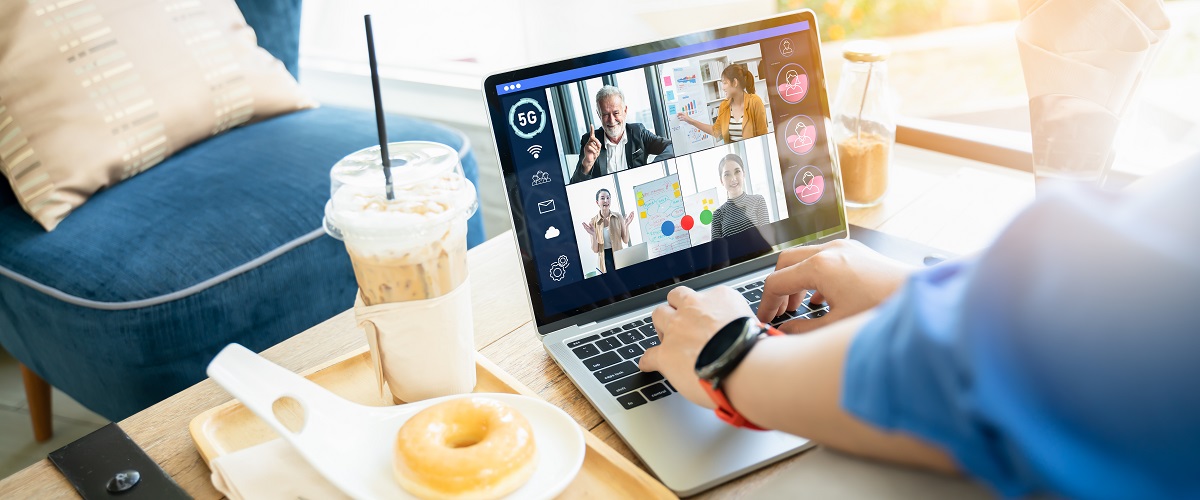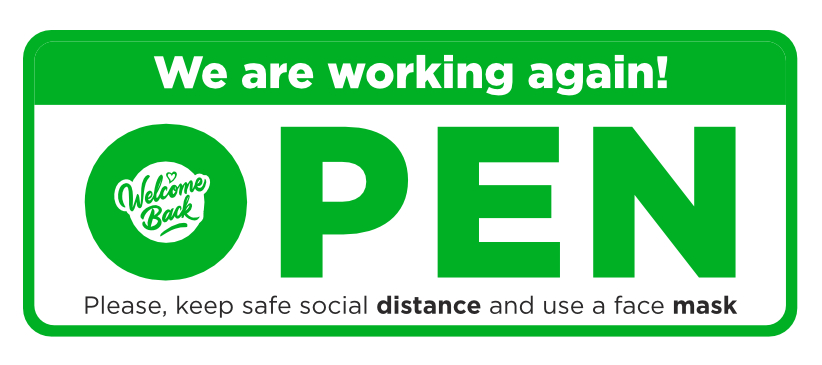Social Distance and Learner Closeness – Impactful Learning in a COVID-19 World
We’ve all witnessed profound and swift changes to our lives and to our businesses due to the pandemic.

But one thing we’ve seen is that the need for communication and learning has continued – and in some cases even increased – and that engagement with learners is still a paramount objective for success. We liked an observation from our partner Six Degrees Medical, a global medical communications agency headquartered in Toronto, where Executive Vice President, Carolyn Whiting, said:
“It’s been extremely critical for us to keep learner experience front and center as part of the strategy in transitioning meetings to virtual, to ensure it doesn’t get overly tactical, which can put the overarching goals and learning outcomes at risk. We still want to execute impactful and engaging programs for our clients, even in a crisis – and potentially that’s even more important now than ever to help ensure we support health care providers in optimizing patient management during this challenging time. ”
In this article, Illumina has pooled a few of its own observations with many from our partners and customers, who have been kind enough to share their wisdom. Despite the challenges, COVID-19 has unleashed a tremendous flow of creativity, which you’ll see in numerous examples, ranging from new areas of content, to novel approaches for developing effective learning within today’s logistical constraints, to some of the anticipated differences we expect to see in communication and learning after the pandemic has receded.
Immediate Changes

The shutdown of face-to-face meetings, including in-person instructor-led training (ILT) sessions, has sparked an immediate need for an alternative. Web and video conferencing and webinars represent one of the easiest transition strategies, and many organizations have stepped up their use. Some are taking steps to make those webinars even more valuable. For example, Illumina’s client, the DentaQuest Partnership for Oral Health Advancement, quickly launched a series of live webinars for dentists and oral health providers on critically timely subjects like “Infection Control & Preventive Care During a National Health Crisis” and “Teledentistry: Providing Alternative Care During a Public Health Crisis.” DentaQuest asked Illumina to rapidly convert them to packaged eLearning modules with a number of enhancements, including adding LMS tracking and assessments for Continuing Education Unit (CEU) credit. Three such webinars have already been launched in the last few weeks, and numerous more are in the works.
In other cases, the replacement for face-to-face meetings has required a more comprehensive solution. Illumina’s partner IBIS Consulting Group, a world leader in workplace Diversity, Equity and Inclusion (DEI) training services, shared some examples from one of their recent initiatives. According to Shilpa Pherwani, IBIS Founder and CEO:
“Many companies are pro-actively discussing ways to pivot and adapt the approach to training. We believe it is critical to keep the momentum on DEI during these difficult times. A large retail client where we were conducting half-day workshops on unconscious bias has transitioned to a series of two virtual facilitated sessions. For another large technology company that was getting ready to pilot one of our live interactive theater sessions on racial equity, we had to quickly transition to a virtual interactive theater approach.”
Examples of Increased Need and Demand
While some organizational activities have shrunk or even stopped altogether during this period, there are situations where learning needs have actually increased. For example, at Illumina’s partner Education Development Center (EDC) – a global nonprofit working on improving education, promoting health, and expanding economic opportunity around the world – Mel Adler, Product and Marketing Director for Prevention Solutions@EDC, notes that “practitioners who had until very recently been too busy to find time for professional development are now taking advantage of the opportunity to register for our online courses.”

And when you have a little more time to plan for learning activities within the COVID-19 constraints, new initiatives can be explored. Carolyn Whiting at SDM commented about how her organization is shifting the way it handles major pharmaceutical launch events for their clients:
“We launched eConnext™, our virtual offering a couple years ago – which is our unique solution to how pharma can effectively engage healthcare providers, other customers and stakeholders in an online setting. As a global agency, we had client programs that were impacted by COVID-19 starting in late February. Since March, there’s been a trend in project-based discussions with clients about having a “plan B” in place if we needed to consider the possibility of a virtual or online version for their event. Since then we have transitioned close to 15 events to virtual with eConnext™. And looking ahead, we have over 10 ‘in progress’ transitioned events being executed virtually through late May!”
Shilpa Pherwani from IBIS noted that:
“It’s a little early to draw conclusions, but we are seeing several new requests coming in for eLearning. For example, a client that was getting ready to launch three new Business Resource Groups (BRGs, also known as ERGs – Employee Resource Groups) decided to offer a short elearning module as prework to their upcoming launch meeting. This will help BRG leaders get up to speed with best practices and other foundational content.”
New types of elearning solutions are being created, accelerated, and expanded.
Necessity Mothers Invention in Elearning Production, Too – Different Ways to Develop and Deliver Learning

At the same time that there are so many calls for new elearning solutions, developers are finding that they need to use a variety of new techniques to get the job done. For example, Illumina and its clients and partners have needed to adjust to new hurdles in recording audio narration for their elearning projects. While some voiceover artists were previously able to record narration in their home studios for certain projects, for others audio needed to be recorded in professional production studios. With travel and facilities limited, and audio engineers working from home studios, many more voiceover artists have had to make the switch with the studios working with remote tools like Source-Connect and ipDTL for high-quality digital audio connections. And for clients who prefer to record narration themselves, Illumina has been providing guidance on high-quality narration and podcasting recording equipment for reasonable quality audio capture from home and workplace setups. The equipment is inexpensive, and in some situations can be sent to the individuals doing the recording at their home, or shipped around within an organization as needed.

Similarly, for video shoots, our colleagues are adapting their approaches as well. Jonathan George, President of Illumina’s video production partner Media Electric, says “we are researching the ins and outs of home video production and refining our guidelines and recommendation for iPhone integration with Zoom and simple lighting and sound.” This approach can be used for some projects, but other projects necessitate that video be shot on location, to capture actual workplace environments, procedures, and the like.
For this requirement, Jonathan shared a safe-shooting approach that his firm has developed to accommodate a scheduled video shoot in a biotech lab while reducing exposure risk to everyone involved:
- Limit personnel – one production person and one client
- Arrive with PPE already in place and equipment wiped down and disinfected
- Before entering lab, wipe down equipment, remove PPE, wash hands thoroughly, replace with fresh PPE, including N95 mask, lab-coat or gown, and goggles
- Set up camera in place without client (who will demonstrate procedures)
- Set up recorder/monitor at least 6 feet away from camera; all recording can be done remotely from recorder (CDC guidelines require no more than 15-minute periods closer than 6 feet)
- Set up iPhone on a separate stand with Zoom so that the course developer can be in constant contact from home to view the shots and interact with the cameraperson
Shilpa Pherwani from IBIS relayed a home-based approach that her organization is using to produce virtual interactive theater, mentioned above:
“The actors are shooting scenarios from their homes illustrating scripted remote meetings to show the impact of unconscious bias on themselves and their fellow employees. The actors then join virtually facilitated sessions where they stay in character and answer questions from the audience.”
Envisioning the Needs of the Future

While we’re still squarely in the middle of things, we’re all beginning to ponder what learning will look like after the crisis period of the pandemic passes, and we look to get to the “New” or “Next Normal.”
Again, Illumina’s partners and customers selected some aspects that they think will emerge or continue after the worst of the pandemic.

In some cases, views were offered of the immediate aftermath. At Illumina client Biogen, a pharmaceutical company that discovers, develops, and delivers worldwide innovative therapies for people living with serious neurological and neurodegenerative diseases as well as related therapeutic adjacencies, R&D Learning Leader Paul Braswell spoke about “a need to look at training for transitioning back to onsite work. We are just beginning to explore what personnel will need to know/learn about as they transition back.” Similarly, at RCP Learning, an Illumina partner for animation and video, President and Co-Founder Pia Proal says “clients are looking at creating content specifically around how they will begin to ‘reopen’ the workplace.” Interestingly, Illumina has some experience with this, from an elearning course we created a few years ago entitled “BioDisaster Response: What Construction Workers Need to Know about Infectious Diseases and Biohazards”, which covered bioagents and pathogens, work practice controls and personal protective equipment, decontamination, and post-exposure practices, among other things.
Carolyn Whiting at SDM shared a look beyond the point of reopening. She commented that:
“We’re now closely evaluating and analyzing the most effective ways pharma can engage with healthcare providers, patients and other stakeholders in the ‘next normal’ – essentially reimagining how this can be done and challenging the status quo pre-COVID-19… The goal is to determine which engagement tactic should be utilized depending on where a healthcare professional or other learner/target audience, represented by a ‘customer profile’ falls along the adoption ladder – whether it’s for product prescribing, new data dissemination, or general education.”
Shilpa Pherwani at IBIS offered one of their views about the longer-term impact for elearning:
“As we use more technology solutions, we are cognizant that we want people to still have authentic and meaningful dialogue on diversity, equity and inclusion topics. We are adding new exercises and elements – like storytelling, microlearnings as pre-work, follow up assignments – to our training programs to encourage this dialogue.”
Conclusion
COVID-19 has put elearning on the front burner, for organizations that previously have been heavy users and light users alike. We’d like to hear your perspective, whether it’s about the kinds of learning or the techniques required to create and deliver it. Please share your thoughts with any of us on the Illlumina team!
Hope your organization stays safe and keeps learning!
With best regards,
– Your friends at Illumina Interactive



